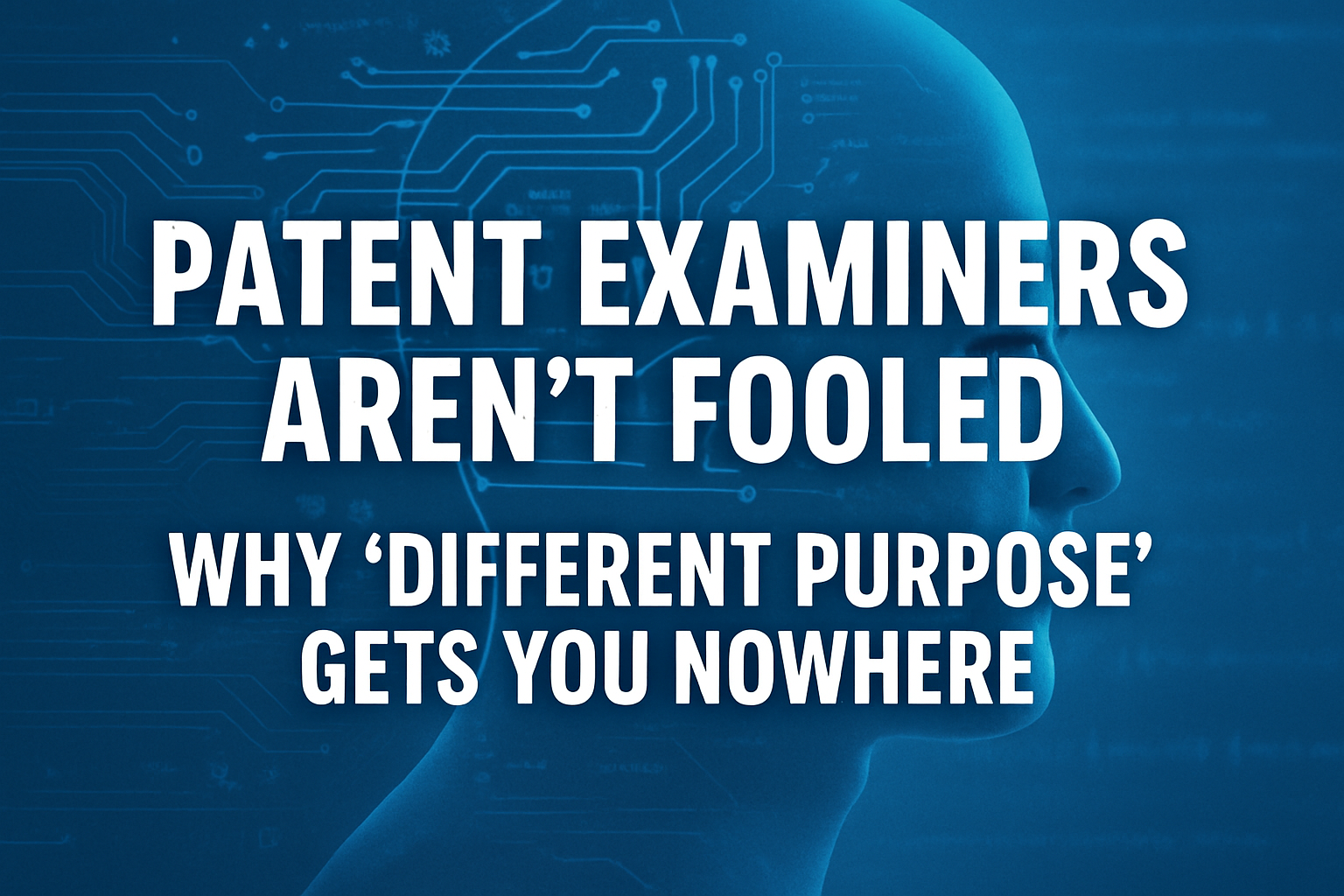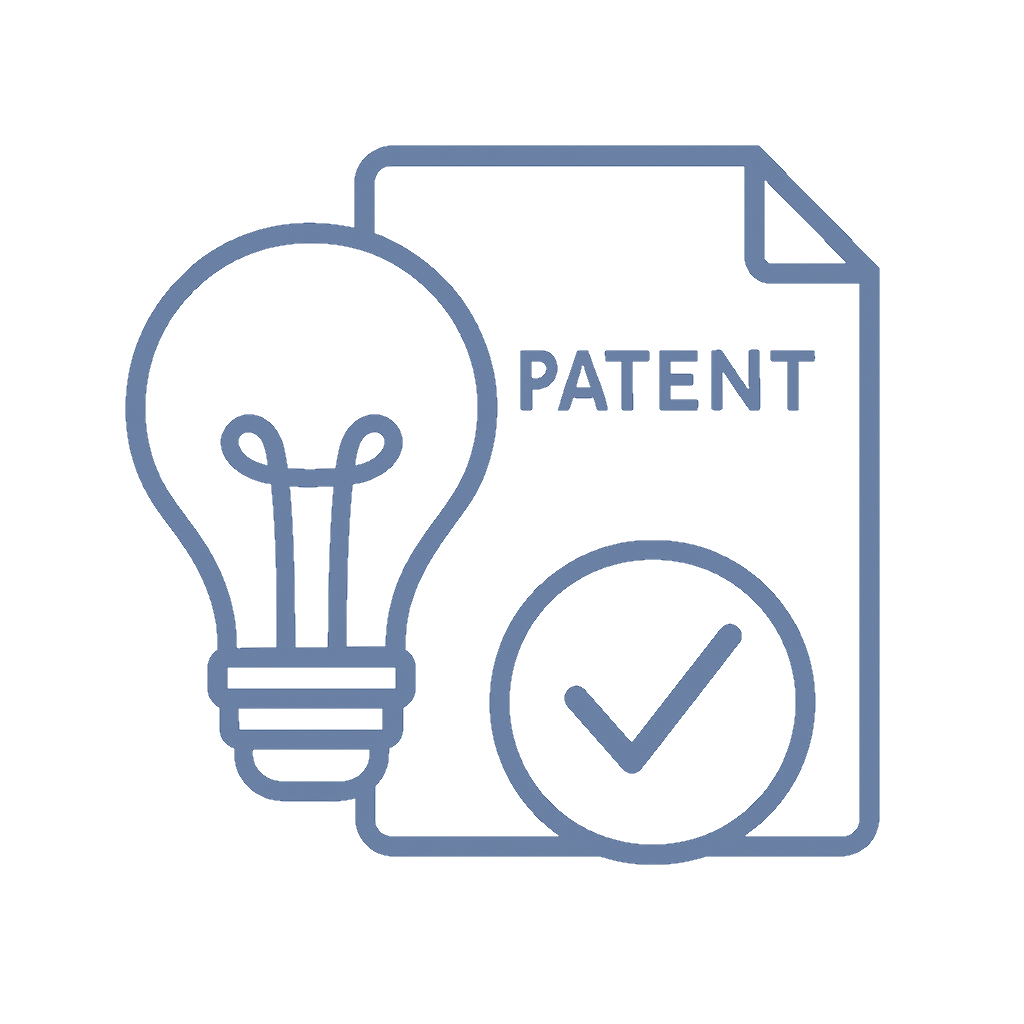📌 Quick Summary
1. 1-Sentence Answer
Arguing that your invention is patentable simply because it’s used for a different purpose rarely works; patent examiners focus on structure and steps, not just field of use.
2. The Article Overview
This article busts the myth that a “different purpose” is enough to overcome patent rejections. We’ll cover why this argument fails, explain legal standards, highlight real-world cases, and give tips to craft better office action responses.
❓ Common Questions & Answers
Q1: Why doesn’t using something for a different purpose make it patentable?
A: Patent law examines the novelty of structure or steps, not merely how an invention is used. If the underlying design matches prior art, a new purpose alone won’t win the day.
Q2: Has anyone ever succeeded with a ‘different purpose’ argument?
A: Success stories are about as rare as a unicorn in a law library—examiners look for genuine novelty, not repurposing.
Q3: Are there any exceptions where a new purpose counts?
A: Only if the new purpose reveals a previously unrecognized property or result, making the structure itself new or non-obvious. That’s a tall order.
Q4: What should I focus on in my office action response?
A: Address how your invention’s structure or steps differ from prior art, not just how you intend to use it. Examiners want substance over sales pitch.
Q5: Will clever wording help my argument?
A: Nope. Patent examiners have seen it all—focus on technical differences and legal standards, not creative copywriting.

📜 Step-by-Step Guide
1. Carefully review the cited prior art.
Identify every similarity and difference in structure or method, not just end use.
2. Compare claim language to prior art.
Make sure your claims emphasize technical differences, not just new uses.
3. Research legal standards and case law.
Understand why “different purpose” arguments fall flat, so you can avoid them.
4. Draft a response focused on technical novelty.
Highlight inventive steps and features, not just the problem being solved.
5. Consult a patent attorney or agent.
Professional help can spot subtle claim differences and avoid common pitfalls.
📖 Historical Context
The “different purpose” argument has a long history in patent law, and, like bell-bottom jeans, it just refuses to die—even though it’s hopelessly out of style. Since the earliest days of the U.S. Patent Office, inventors have tried to distinguish their applications from prior art by arguing that their inventions were intended for a different use. The reasoning is seductive: if the examiner cited a coffee mug, and your invention is for a flowerpot, surely your creation must be new, right?
Not quite. Patent law has, for decades, focused on the underlying structure, method, or composition rather than the end-use scenario. Early court decisions established that merely repurposing a known item for a new use didn’t make it patentable—unless the new use uncovered a previously unknown property or capability of the item. By the mid-20th century, U.S. courts were growing weary of applicants trying to slip inventions through with nothing more than a fresh marketing angle. The phrase “intended use” became a red flag, not a ticket to allowance.
Modern examiners now treat “different purpose” arguments as almost a rite of passage for new applicants—something everyone tries, but no one succeeds with. Today, the only way to win over a skeptical patent examiner is to prove your invention is structurally or functionally different from what’s come before, not just that you’re using the same widget for a new widget-worthy task.
🏢 Business Competition Examples
1. Keurig vs. Coffee Pod Copycats:
When coffee pod competitors tried to patent “single-serve beverage pods” for tea instead of coffee, patent examiners rejected their claims. The structure was identical; the field of use made no difference.
2. Apple’s iPad Stylus Variants:
Companies argued their styluses were “for artistic drawing” rather than “for note-taking,” but examiners saw through it—the underlying tech was the same, so the argument failed.
3. Pharmaceutical Repurposing:
Drug companies often try to patent a known compound for a new illness. Unless they show a new and non-obvious method of use, simply targeting a different disease won’t fly.
4. Smart Lock Technology:
A startup claimed a door lock system was “for gyms, not homes,” hoping for a patent. The examiner, unimpressed, focused on identical locking mechanisms already disclosed in the prior art.
💬 Discussion Section
Let’s be honest: the patent system can be confusing, and inventors naturally look for any edge they can find. The “different purpose” argument appeals to common sense—after all, if you’re using an old thing in a brand-new way, that feels innovative. Unfortunately, the law disagrees. Patent examiners are trained to see through such arguments because the patent system’s foundation is built on the concepts of novelty and non-obviousness, not clever marketing spins.
Here’s why: imagine someone tries to patent a bicycle tire as a “revolutionary dog chew toy.” If the tire itself is unchanged, the fact that it’s destined for Fido’s jaws instead of a bike rim is irrelevant. The examiner will—politely—say, “Nice try.” The same applies to software, gadgets, or pharmaceuticals: unless the product’s technical attributes change, a new purpose won’t win you a patent.
But why is this the rule? If patent law allowed protection based solely on new uses, it would quickly devolve into chaos, with overlapping patents on the same products, stifling innovation and tying up the courts. By focusing on what’s actually new in terms of structure or steps, the system rewards true breakthroughs rather than rebranding exercises.
Seasoned patent attorneys know that arguing “different purpose” is basically waving a red flag at an examiner. Instead, the focus must be on what has changed in your claims—what’s new, inventive, and unexpected about the technology itself. Some may argue that this approach stifles creativity or business model innovation, but patent law’s goal isn’t to reward every good business idea; it’s to promote technological progress.
In practice, many applicants waste time (and money) trying to persuade examiners with field-of-use arguments, only to be met with rejection after rejection. Far better to do your homework, understand the cited art, and build your argument around genuine differences in how your invention works, not just how you plan to sell it. After all, the patent examiner’s job is to uphold the law, not to hand out gold stars for creative thinking.
So next time you’re drafting an office action response, resist the urge to argue, “But my invention is for X, not Y!” Instead, dig deeper, get technical, and show how your creation breaks new ground—literally or figuratively. That’s what impresses examiners and, ultimately, what gets patents granted.

⚖️ The Debate
Pro: Let New Uses Get Patents!
Some argue that allowing patents for new purposes could encourage broader creativity and innovation. If someone finds a game-changing use for a known product, why shouldn’t they be rewarded? It could open doors for reimagining technology in unexpected ways.
Con: Structure Over Spin, Please!
The established legal view is that patents should reward technical innovation, not just clever marketing or new applications. If new uses alone qualified, the system would become clogged with redundant patents, making genuine progress harder to protect.
✅ Key Takeaways
-
Patent examiners look for structural or procedural novelty, not just new uses.
-
“Different purpose” arguments almost never overcome rejections.
-
Address technical differences in your claims, not intended field of use.
-
Legal standards are clear: purpose alone isn’t patentable.
-
Consult professionals to avoid rookie mistakes in office action responses.
⚠️ Potential Business Hazards
-
Wasted Resources: Time and money spent on doomed arguments delay real progress.
-
Patent Rejections: Overreliance on field-of-use arguments leads to repeated denials.
-
Competitor Advantage: Weak arguments let competitors capitalize on your mistakes.
-
Loss of Credibility: Frequent reliance on these myths may harm your reputation with the patent office.
❌ Myths & Misconceptions
-
“A new purpose makes an old invention patentable.”
-
“Intended use can overcome structural similarities in prior art.”
-
“Patent examiners care about business models.”
-
“Clever phrasing can outsmart the patent office.”
-
“Every new application deserves a patent.”
📚 Book & Podcast Recommendations
-
Book: Patent It Yourself by David Pressman
https://www.nolo.com/products/patent-it-yourself-pat.html -
Book: Essentials of Patent Claim Drafting by Morgan D. Rosenberg
https://www.amazon.com/Essentials-Patent-Claim-Drafting-Rosenberg/dp/019985635X -
Podcast: IP Fridays
https://www.ipfridays.com/ -
Podcast: Clause 8 Podcast
https://www.iplawleaders.com/clause-8-podcast/
⚖️ Legal Cases
-
In re Schreiber, 128 F.3d 1473 (Fed. Cir. 1997)
https://casetext.com/case/in-re-schreiber
Summary: The court held that the use of a known structure for a new purpose is not patentable unless the structure itself is new or non-obvious. -
In re Crish, 393 F.3d 1253 (Fed. Cir. 2004)
https://casetext.com/case/in-re-crish
Summary: Intended use in the claim's preamble does not limit patentability; what matters is the structure or method. -
In re Bertsch, 132 F.2d 1014 (C.C.P.A. 1942)
https://casetext.com/case/in-re-bertsch
Summary: The function or purpose of an invention doesn't change its patentability if the structure is the same. -
In re Otto, 312 F.2d 937 (C.C.P.A. 1963)
https://casetext.com/case/in-re-otto
Summary: Patent claims must be distinguished by technical features, not just by their intended use.
📣 Expert Invitation
Have more questions or want to get your office action response right the first time? Chat with real IP experts and get a free consultation at Inventive Unicorn!
🔚 Wrap-Up Conclusion
Next time you’re tempted to argue “different purpose” in a patent office action, remember: examiners aren’t fooled. Focus on what makes your invention truly unique—and leave the marketing pitches for your website.












